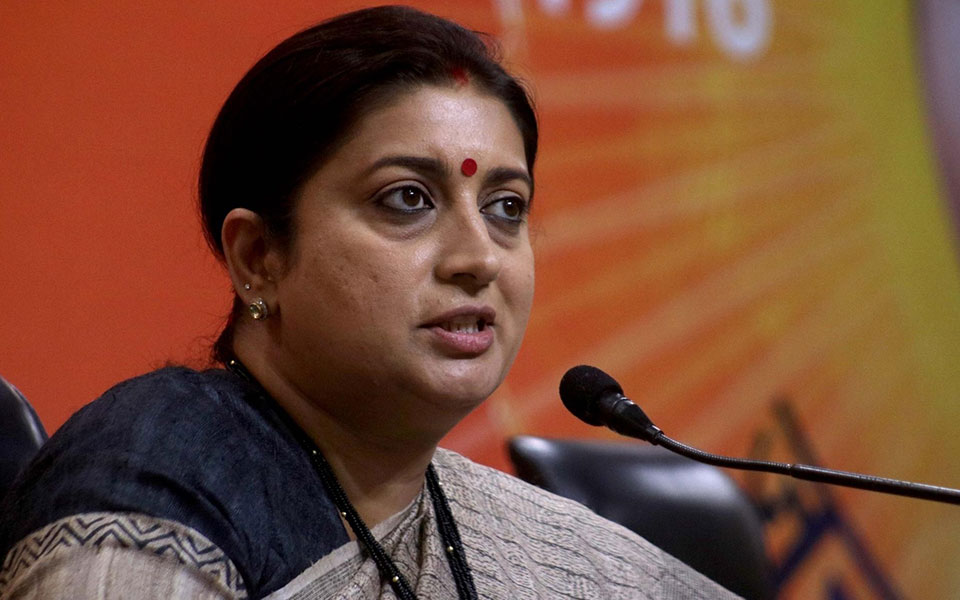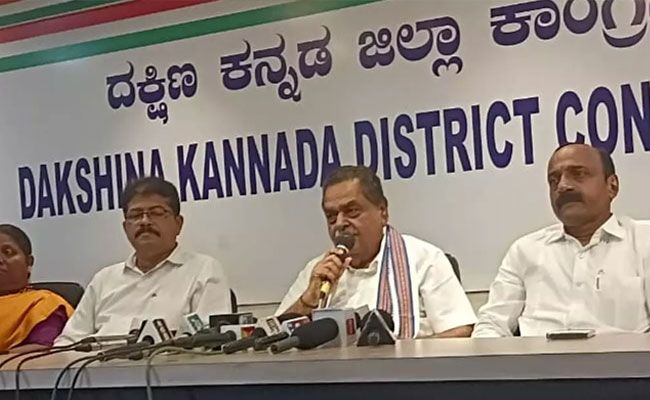Kolkata, May 31: Union Textiles Minister Smriti Irani on Thursday claimed that India has the potential to become one of the largest jute exporters in the diversified section, if the quality of the raw material can be improved.
The minister also urged the jute industry to bolster the centre's initiative in providing certified jute seeds to the farmers that would produce better quality crop.
"When we look at jute, we wonder why our jute industry has not galloped ahead like Bangladesh. One of our biggest challenges has been the output of the raw material which is not fine enough for enhanced diversification," Irani said while addressing the members of the Merchants' Chamber of Commerce here.
The minister pointed out that the agricultural ministry and the textile ministry invited all state governments to ensure that certified seeds are given to the jute farmers through every Krishi Vigyan Kendras (the agricultural extension centres created by the Indian Council for Agricultural Research to provide farm support).
"I would encourage the jute industry to become a participant in that endeavour, so that the productivity and income of the farmer increases and at the same time our crop becomes finer and better for more diversification," she said.
Pointing out that India is the largest jute producing country in the world, she said "we have the potential to become one of the largest jute exporters in the diversified section".
The Union Minister said the Centre is providing support to the partners of the jute industry, who have enhanced the diversification of jute products so that they can be self sufficient and do not have to completely rely on the government's support.
She also highlighted the importance of the newly emerged technical textile sector and hoped the Bengal textile industry that contributes to more than five percent of the overall national textile segment will be a huge participant in the development of this sector.
"The Centre has an apparel package for the first time in the history of the country of up to Rs 6,000 crore. This is the largest ever sanction in the textile industry in this country," she pointed out.
Irani said an outlay of Rs 690 crore has helped set up 21 readymade garment manufacturing (RGM) units in the seven northeastern states at the end of last year under the direction of Prime Minister Narendra Modi. They have become fully functional.
Referring to the GST refund or 'refund Pakhwada' that would take place from May 31 to June 14 this year, she said a simplified mechanism for the small importers has been put in place, that would enable more people in the MSME sector to get the refund and help increase the ease of doing business.
Let the Truth be known. If you read VB and like VB, please be a VB Supporter and Help us deliver the Truth to one and all.
Mangaluru: Congress leader and former minister B Ramanath Rai slammed BJP leader R Ashoka for calling AICC General Secretary KC Venugopal an agent of the party high command, and asked if the general secretary and other office-bearers in the BJP were commission agents too.
Rai, who addressed a press meet at the Congress office in the city on Friday, expressed fury over the recent comments of the BJP leader that Chief Minister Siddaramaiah was presenting himself in a shameless manner in public life. Ashoka, who is also Leader of the Opposition (LoP) in the Karnataka Legislative Assembly, had said that the Congress government had ‘broken every previous record on corruption-related controversies’.
“Ashoka has spoken with sheer ignorance and displays his lack of maturity, as he often does while facing the media. KC Venugopal has been working at organization of the party and it is unbecoming of Ashoka to criticize Venugopal as he did,” Rai told reporters.
“Being in a responsible position, how acceptable is it for Ashoka to pass disrespectful, random comments about another leader who also holds a responsible position? If KC Venugopal is indeed an agent of the party high command, what should we consider BJP leaders to be? Are they brokers?” he asked
Commenting on Ashoka’s allegations of corruption in the Congress government in Karnataka, Rai pointed out, “The KSRTC land was sold to private parties when he (Ashoka) was transport minister. We can find several such cases across the state, which need to be probed.”
The former minister, however, refused to comment on the incident that occurred at Mangaluru airport during CM Siddaramaiah’s visit to the city recently.
Former mayors Ashraf and Shashidhar Hegde, Congress activists Vishwas Kumar Das, Subhodaya Alva, Shabeer, Baby Kundar, Padmanabha, Nazeer Bajal and Prem were present.





